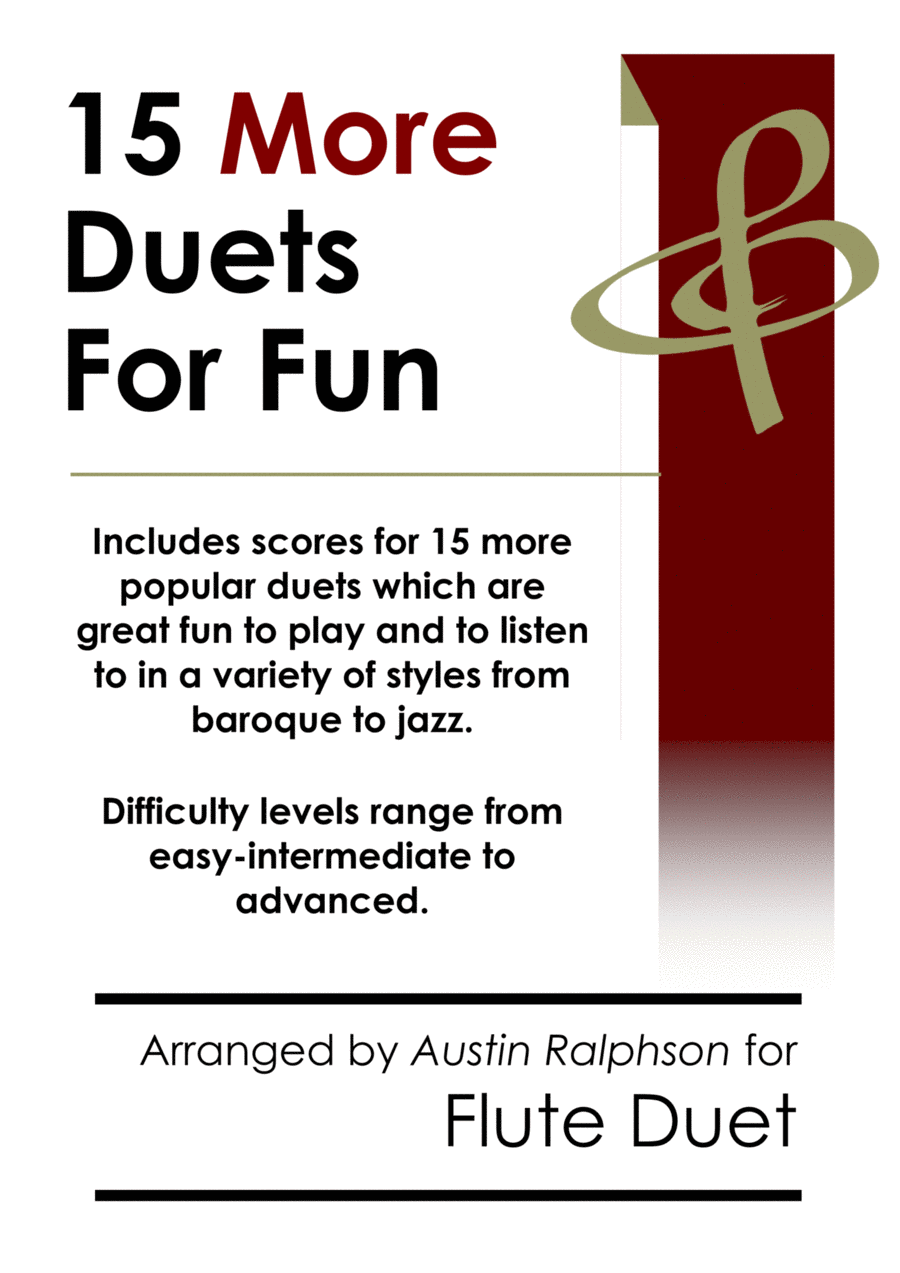Flute Duet Flute - Level 3 - Digital Download SKU: A0.563861 Composed by Antonio Vivaldi, Charpentier, Edvard Grieg, Felix Bartholdy Mendelssohn, George Gershwin, Jeremiah Clarke, Johann Strauss Jr., Peter Ilyich Tchaikovsky, Scott Joplin, and Wolfgang Amadeus Mozart. Arranged by Austin Ralphson. 20th Century,Baroque,Classical,Concert,Wedding. Score. 38 pages. Austin Ralphson #5289817. Published by Austin Ralphson (A0.563861). This is a second book of popular pieces arranged for duet. The difficulty levels range from early-intermediate to advanced, and should provide something for everyone to enjoy. The pieces have been arranged so that both parts are interesting throughout - they often interweave and take on many roles within the music. A duet score is provided for each piece, and the repertoire covers wedding music, slow melodies, traditional melodies, baroque classics, famous symphonic melodies, piano works and other popular pieces. This is the full list:1. The Entertainer (Scott Joplin)2. Highlights from Rhapsody In Blue (Gershwin)3. The Blue Danube Waltz (Johann Strauss II)4. Six Christmas Pieces, No.5 (Mendelssohn)5. Für Elise (Beethoven)6. In The Hall Of The Mountain King (Grieg)7. Trumpet Voluntary (Jeremiah Clarke)8. Eine Kleine Nachtmusik No.1 (Mozart)9. The Londonderry Air / Danny Boy (trad.)10. Symphony No.5, Mvt.1 (Beethoven)11. Rondo Alla Turca (Mozart)12. Autumn from ‘The Four Seasons’ (Vivaldi)13. Ode to Joy from Symphony No.9 (Beethoven)14. March of the Toy Soldiers from ‘The Nutcracker’ (Tchaikovsky)15. Prelude from ‘Te Deum’ (Charpentier)
